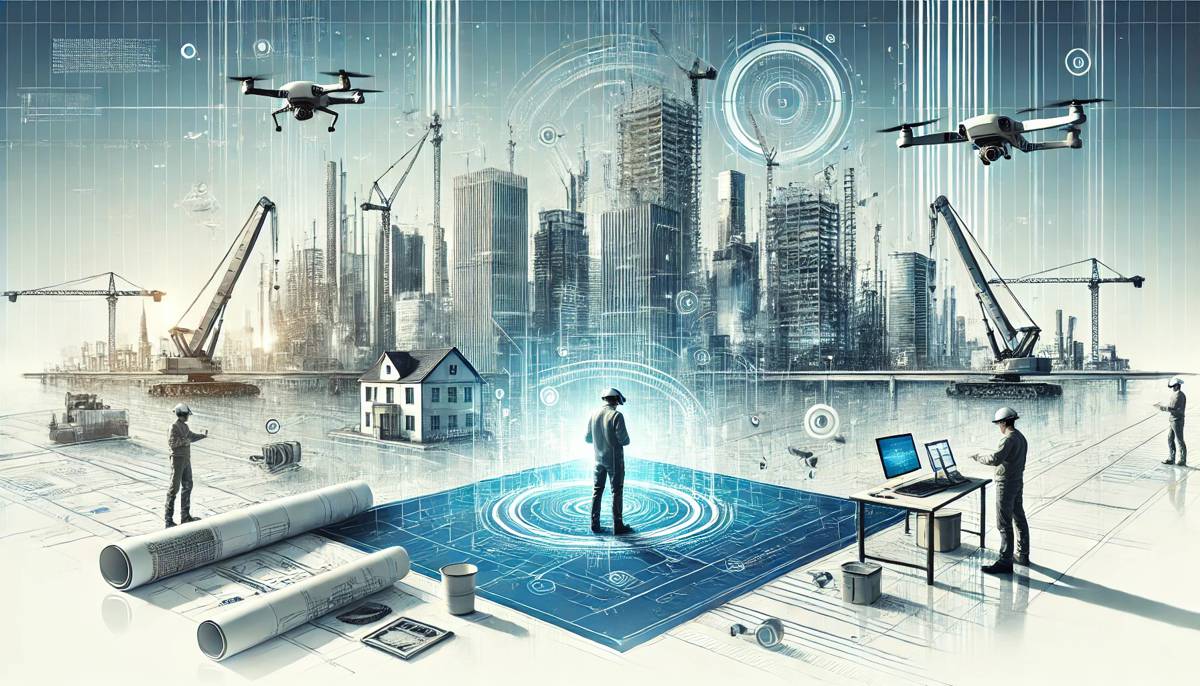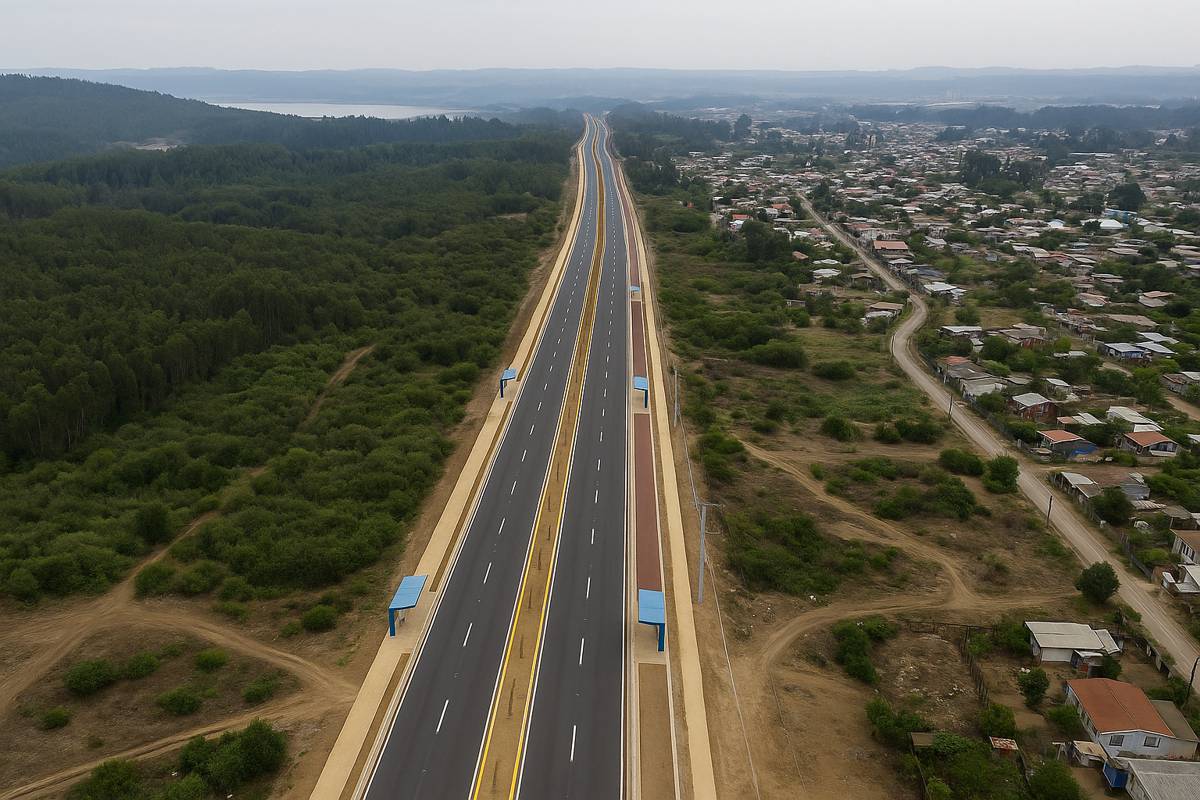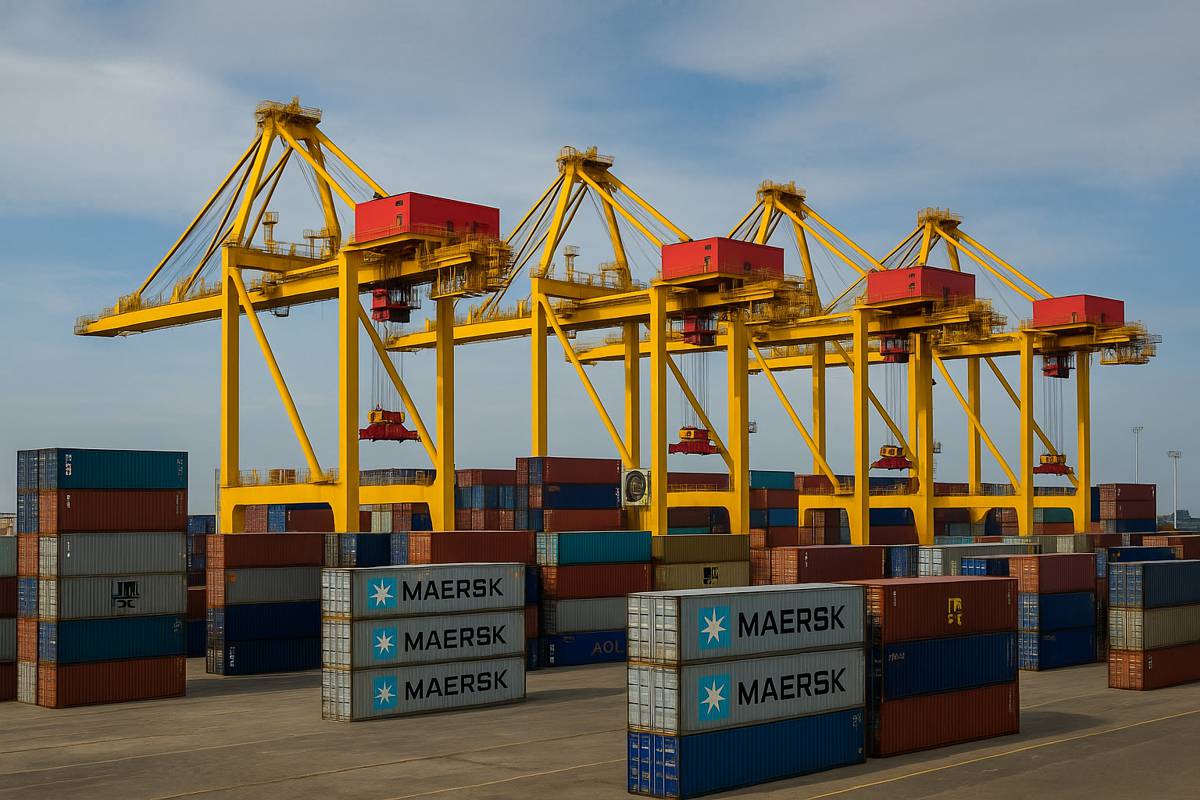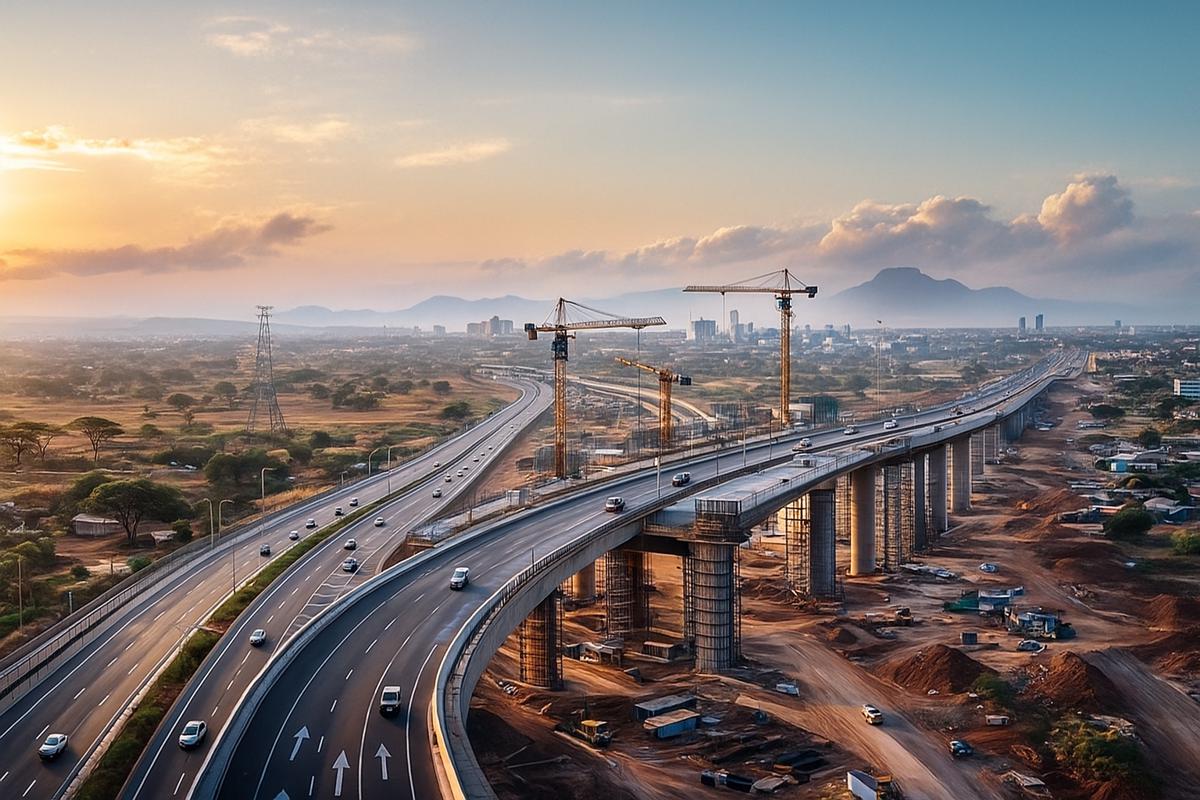The Digital Technologies Transforming the Construction Industry in 2024
The construction industry stands on the brink of a technological revolution. As we dive into Construction Technologies & Innovations Month at Highways.Today, it’s clear that the pace of innovation is reshaping how we design, build, and maintain our infrastructure.
From digital modelling to sustainable materials, each breakthrough pushes us toward a more efficient, safe, and sustainable built environment. This article will explore the top 12 trends transforming the construction landscape and provide insights into the technologies driving these changes.
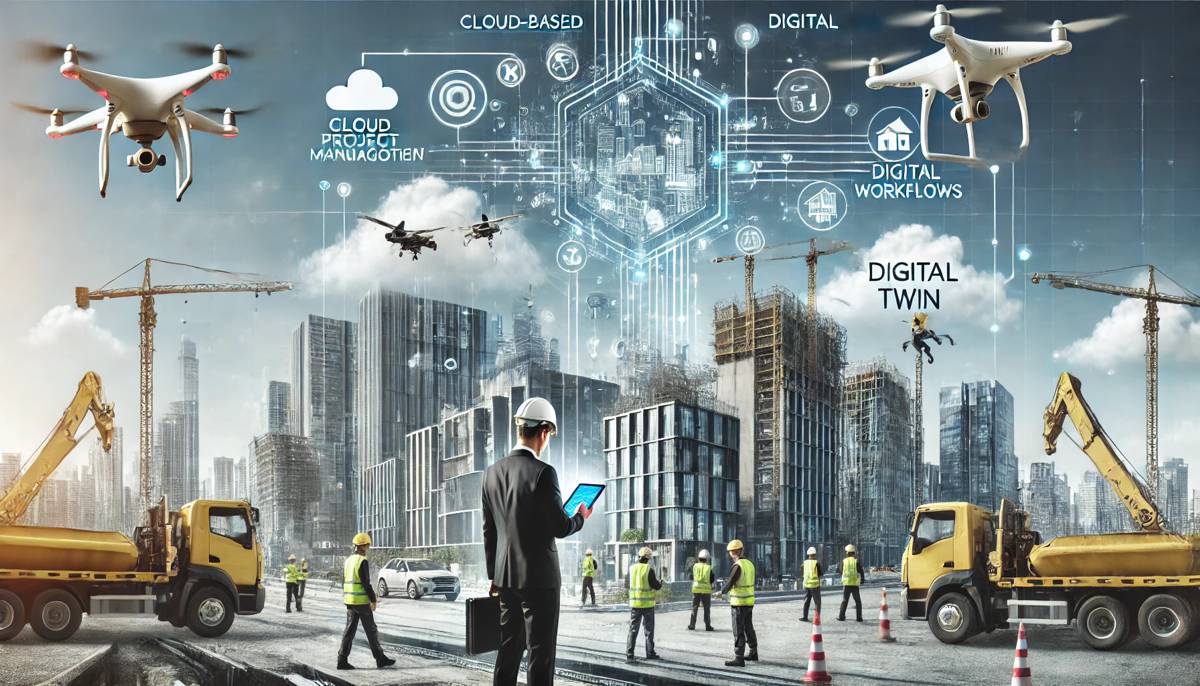
Digitization and Digital Twins
The Digital Transformation: Digitization is fundamentally transforming the construction industry by enabling the seamless integration of digital technologies across all phases of the project lifecycle. The shift involves the adoption of digital tools and platforms for project management, design, and collaboration. For example, cloud-based project management software allows teams to share and access information in real-time, improving communication and coordination. Digital workflows streamline processes, reduce paperwork, and enhance data accuracy, leading to better project outcomes.
The Power of Digital Twins: Digital twins represent one of the most advanced applications of digitization in construction. A digital twin is a dynamic, digital representation of a physical asset, such as a building or infrastructure, that uses real-time data from IoT sensors to mirror the asset’s condition and performance. This virtual model allows for continuous monitoring, simulation, and analysis, enabling predictive maintenance and informed decision-making. Digital twins can identify potential issues before they become critical, optimize energy usage, and extend the lifespan of the asset.
Predictive Maintenance and Informed Decision-Making: The use of digital twins allows for predictive maintenance, which is essential for reducing downtime and extending the lifespan of assets. By continuously monitoring the asset’s condition and performance, potential issues can be identified before they become critical. This proactive approach not only prevents costly repairs but also ensures the safety and reliability of the infrastructure. Moreover, digital twins provide valuable insights into energy usage and operational efficiency, enabling informed decision-making that can lead to significant cost savings and environmental benefits.
Real-World Applications: Digital twins are already being used in various construction projects around the world. For instance, the City of Singapore has implemented a digital twin of the entire city to monitor urban development and optimize resource usage. Similarly, in the UK, the London Underground has adopted digital twin technology to monitor and maintain its extensive network of tunnels and stations. These real-world applications demonstrate the potential of digital twins to revolutionize the construction industry by enhancing efficiency, sustainability, and resilience.
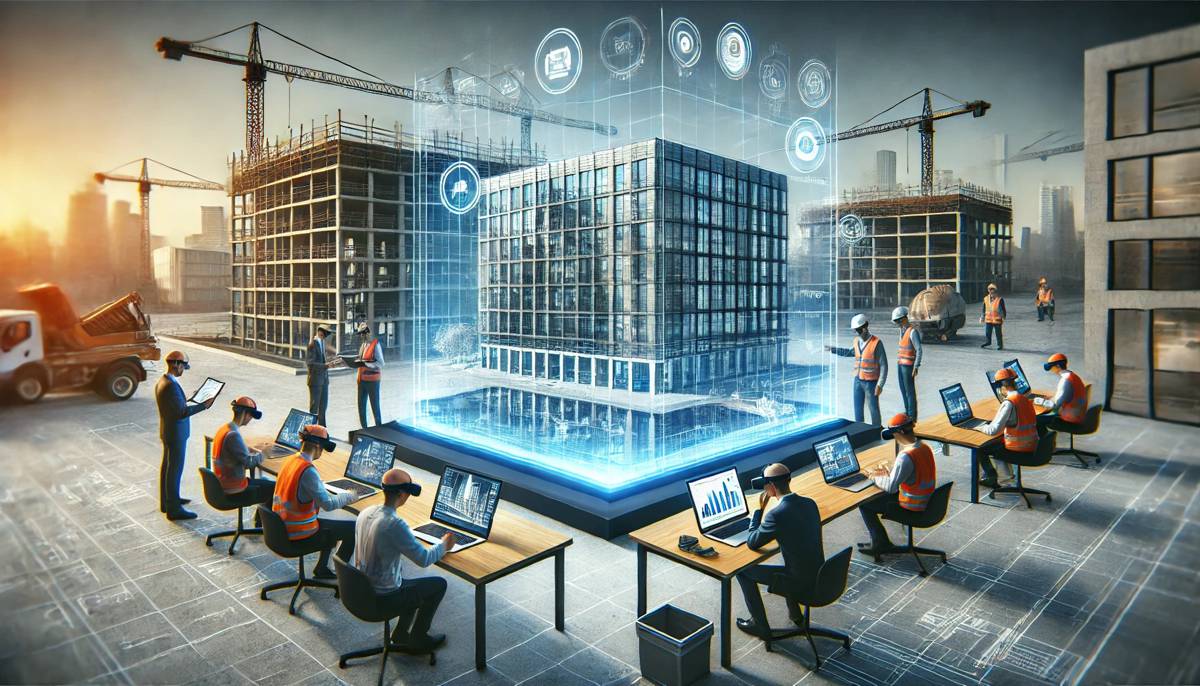
Building Information Modelling (BIM)
Enhancing Collaboration: Building Information Modelling (BIM) is transforming the construction industry by enabling the creation of highly detailed digital representations of buildings and infrastructure. These models integrate data from various disciplines, including architecture, engineering, and construction, allowing for enhanced collaboration and coordination among stakeholders. BIM facilitates better decision-making throughout the project lifecycle by providing accurate and up-to-date information on design, materials, and schedules. Moreover, the ability to simulate construction processes and detect potential issues before they arise significantly reduces errors and rework, leading to cost savings and improved project outcomes.
Supporting Sustainability: One of the key advantages of BIM is its ability to support sustainable construction practices. By analysing energy performance, material usage, and environmental impact within the model, project teams can make informed choices that reduce the carbon footprint and enhance the overall sustainability of the project. Additionally, BIM’s integration with other technologies such as GIS (Geographic Information Systems) and IoT (Internet of Things) allows for real-time monitoring and maintenance of buildings, extending the value of the model beyond construction and into the operational phase. This holistic approach to building management promotes long-term sustainability and resource efficiency.
Enhancing Design and Construction Processes: BIM enhances the design and construction processes by providing a comprehensive and integrated view of the project. The ability to create detailed 3D models allows for better visualization and understanding of the design, reducing the likelihood of errors and misunderstandings. Moreover, BIM enables the simulation of construction processes, allowing project teams to identify potential issues and optimize workflows before construction begins. This proactive approach not only improves project outcomes but also enhances safety and efficiency on the construction site.
Through AutoCAD Civil 3D training, professionals acquire the expertise to integrate these concepts into civil design, boosting the precision and effectiveness of their project planning and implementation.
Real-World Applications: BIM is being used in a wide range of construction projects around the world, from residential buildings to large-scale infrastructure projects. For example, the Crossrail project in London, one of the largest infrastructure projects in Europe, has utilized BIM to manage the complex design and construction processes. Similarly, the Burj Khalifa in Dubai, the tallest building in the world, was designed and constructed using BIM, showcasing the technology’s potential to handle even the most complex and ambitious projects. These real-world applications highlight the transformative impact of BIM on the construction industry.
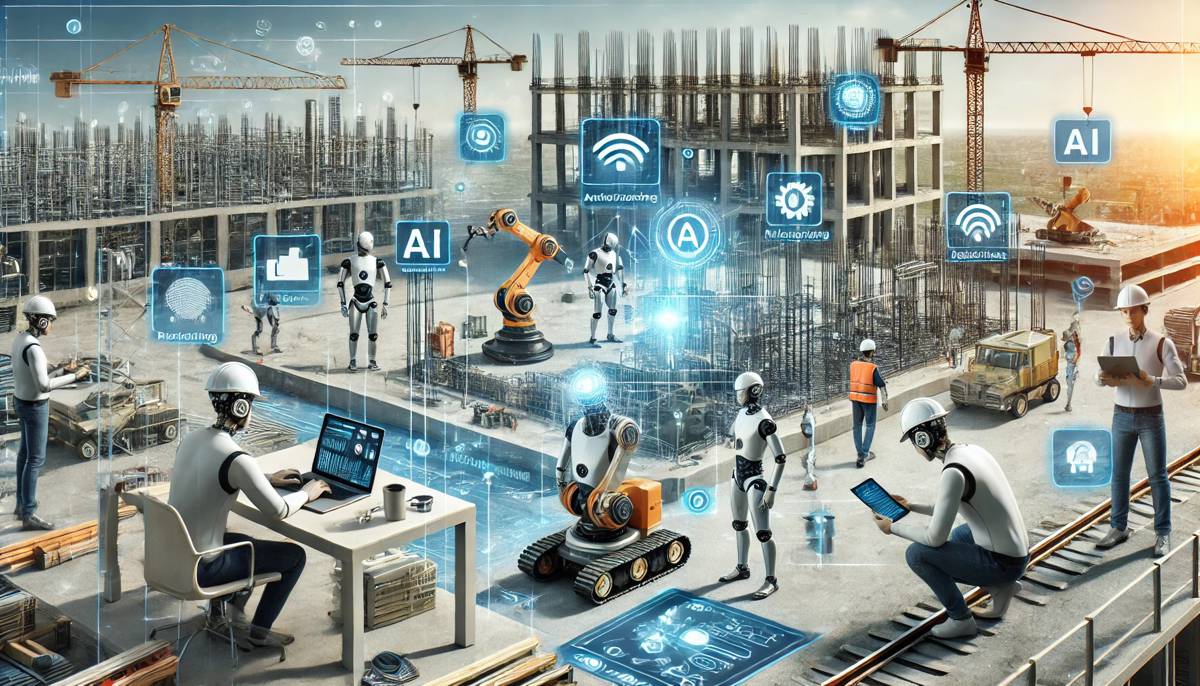
Artificial Intelligence and Machine Learning
Predictive Analytics and Optimization: Artificial Intelligence (AI) and Machine Learning (ML) are revolutionizing the construction industry by enabling predictive analytics, optimizing project management, and enhancing decision-making. AI algorithms can analyse vast amounts of data from various sources, such as project plans, site conditions, and historical performance, to identify patterns and make predictions about project outcomes. This capability allows construction managers to anticipate potential issues, such as delays or cost overruns, and take proactive measures to mitigate risks. Additionally, AI-powered tools can optimize resource allocation, ensuring that labour, materials, and equipment are used efficiently.
Continuous Learning and Improved Accuracy: Machine learning, a subset of AI, is particularly valuable for improving the accuracy of predictions and recommendations over time. By continuously learning from new data, ML algorithms can refine their models and provide more precise insights into project performance. For example, machine learning can be used to analyse sensor data from construction equipment to predict maintenance needs, reducing downtime and extending the lifespan of machinery. Furthermore, AI and ML can enhance safety by analyzing site data to identify hazardous conditions and recommending preventive measures. As these technologies continue to evolve, their integration into construction processes is expected to drive significant improvements in efficiency, safety, and overall project success.
Enhancing Project Management: AI and ML are transforming project management by providing tools that enhance decision-making and optimize workflows. AI-powered project management software can analyse project data to identify potential risks and suggest mitigation strategies. Additionally, these tools can optimize scheduling and resource allocation, ensuring that projects stay on track and within budget. By providing real-time insights into project performance, AI and ML enable construction managers to make informed decisions and respond quickly to changing conditions.
Real-World Applications: AI and ML are being used in various construction projects around the world to improve efficiency and reduce costs. For example, the Hong Kong-Zhuhai-Macao Bridge, one of the longest sea-crossing bridges in the world, utilized AI algorithms to optimize the construction process and ensure the project was completed on time. Similarly, AI-powered project management software has been used in the construction of the Sydney Metro, Australia’s largest public transport infrastructure project, to enhance scheduling and resource allocation. These real-world applications demonstrate the potential of AI and ML to transform the construction industry.
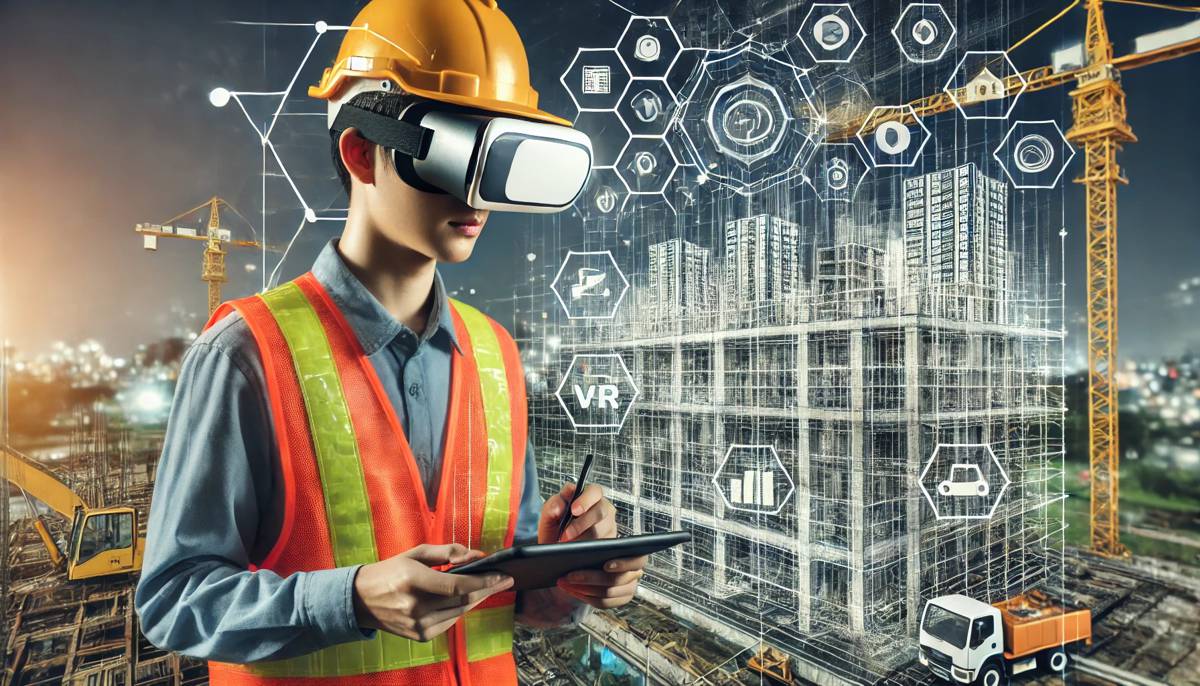
Augmented Reality (AR) and Virtual Reality (VR)
Immersive Visualization and Planning: Augmented Reality (AR) and Virtual Reality (VR) are transforming the way construction projects are designed, planned, and executed. AR overlays digital information onto the physical environment, allowing stakeholders to visualize and interact with 3D models and design elements in real-time. This technology enables architects, engineers, and clients to explore different design options, identify potential issues, and make informed decisions early in the project lifecycle. By providing a clear and immersive representation of the project, AR enhances communication and collaboration among team members, reducing misunderstandings and ensuring alignment on project goals.
Enhancing Communication and Collaboration: Virtual Reality (VR) takes this a step further by creating fully immersive environments that simulate the construction site. VR can be used for a variety of applications, including design reviews, safety training, and construction planning. For example, VR allows project teams to conduct virtual walkthroughs of the site, identifying potential hazards and optimizing construction sequences before physical work begins. This proactive approach to planning and risk management can significantly improve project outcomes and reduce costly delays. Additionally, VR-based training programs can provide workers with hands-on experience in a safe and controlled environment, enhancing their skills and preparedness for real-world tasks.
Proactive Planning and Risk Management: The use of AR and VR in construction planning allows for a more proactive approach to risk management. By providing a realistic and immersive view of the construction site, these technologies enable project teams to identify and address potential issues before they arise. This not only improves safety and efficiency but also reduces the likelihood of costly rework and delays. Furthermore, AR and VR can be used to simulate different construction scenarios, allowing project managers to test and refine their plans before construction begins.
Real-World Applications: AR and VR are being used in various construction projects around the world to enhance design, planning, and execution. For example, the construction of the new Apple Park headquarters in Cupertino, California, utilized AR and VR to visualize and optimize the complex design. Similarly, the development of the Hudson Yards project in New York City, the largest private real estate development in the United States, has used VR for design reviews and construction planning. These real-world applications demonstrate the potential of AR and VR to transform the construction industry.
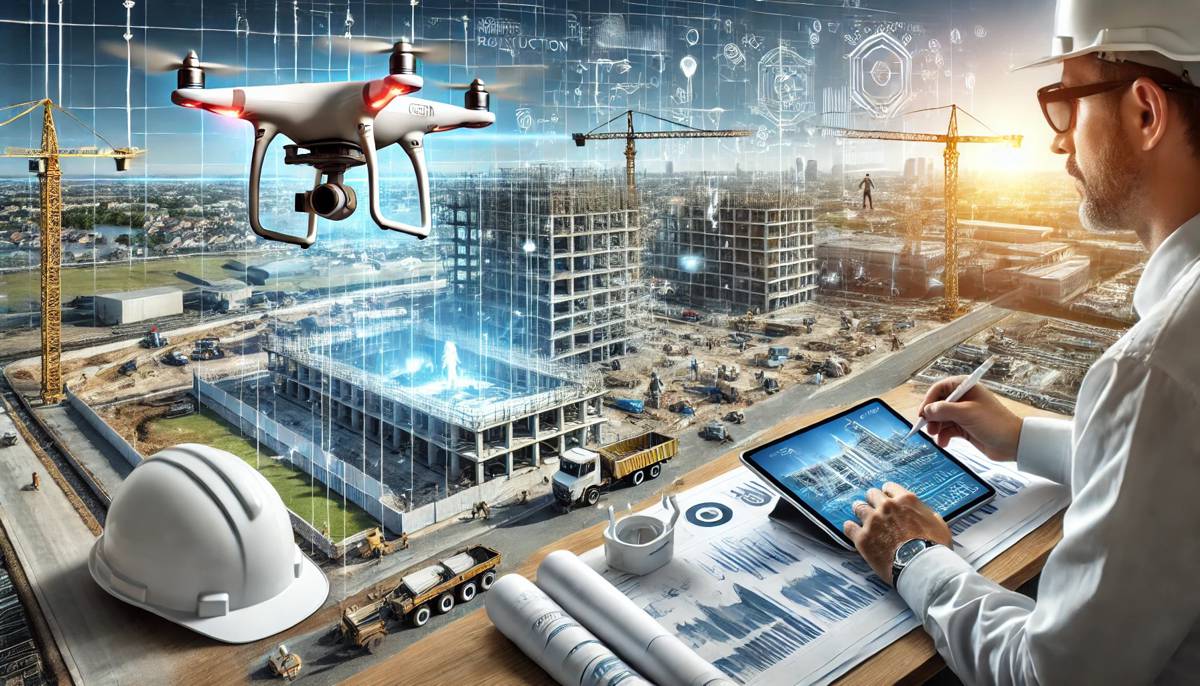
Drones and Aerial Imaging
Comprehensive Site Analysis: Drones and aerial imaging technology are becoming indispensable tools in the construction industry. Drones equipped with high-resolution cameras and sensors can capture detailed aerial images and videos of construction sites, providing valuable data for site analysis, progress monitoring, and inspection. These aerial perspectives enable project managers to identify potential issues, track construction progress, and ensure compliance with design specifications, all from a remote location. The ability to conduct frequent and comprehensive site surveys enhances decision-making and improves overall project management.
Advanced Applications: Beyond imaging, drones are also being used for tasks such as topographic mapping, volumetric measurements, and thermal imaging. By creating accurate 3D models and maps of the construction site, drones help in planning and optimizing site layouts, identifying potential hazards, and ensuring efficient use of resources. Thermal imaging capabilities allow for the detection of heat loss, moisture intrusion, and other issues that are not visible to the naked eye. As drone technology continues to advance, its applications in construction are expected to expand, offering even more sophisticated tools for enhancing efficiency and safety.
Improving Safety and Efficiency: Drones play a crucial role in improving safety and efficiency on construction sites. By providing real-time data and high-resolution images, drones enable project managers to monitor site conditions and identify potential hazards. This proactive approach to safety helps prevent accidents and ensures compliance with safety regulations. Additionally, drones can perform inspections of hard-to-reach areas, reducing the need for workers to be exposed to dangerous conditions. The use of drones for these tasks not only enhances safety but also improves efficiency and reduces project timelines.
Real-World Applications: Drones are being used in a wide range of construction projects around the world to enhance site analysis, progress monitoring, and safety. For example, the construction of the Beijing Daxing International Airport, one of the largest airports in the world, utilized drones to capture aerial images and monitor construction progress. Similarly, the development of the new Google headquarters in Mountain View, California, has used drones for site inspections and topographic mapping. These real-world applications highlight the transformative impact of drones on the construction industry.

Smart Construction Wearables
Enhancing Safety and Productivity: Smart construction wearables are enhancing worker safety and productivity on construction sites. These devices, which include smart helmets, vests, and glasses, are equipped with sensors and communication tools that monitor vital signs, detect hazards, and provide real-time information to workers and supervisors. For example, smart helmets can monitor a worker’s heart rate, body temperature, and exposure to harmful substances, alerting them to potential health risks and ensuring timely intervention. This proactive approach to safety helps prevent accidents and reduces the risk of injury on construction sites.
Facilitating Better Communication: In addition to safety, smart wearables also improve productivity by facilitating better communication and data sharing. Smart glasses, for instance, can overlay digital information onto the physical environment, providing workers with detailed instructions, schematics, and real-time updates without the need to refer to paper documents or handheld devices. This hands-free access to information enhances efficiency and accuracy, allowing workers to focus on their tasks. Furthermore, smart wearables enable real-time communication between workers and supervisors, improving coordination and decision-making on the construction site.
Proactive Hazard Detection: Smart construction wearables are equipped with advanced sensors that can detect various environmental hazards, such as high levels of noise, toxic gases, and extreme temperatures. These devices can alert workers to potential dangers and provide instructions on how to mitigate risks. This proactive approach to hazard detection not only enhances worker safety but also ensures compliance with health and safety regulations. Additionally, smart wearables can monitor the location and movements of workers, helping supervisors ensure that workers are not entering hazardous areas or engaging in unsafe behaviours.
Real-World Applications: Smart construction wearables are being used in various construction projects around the world to enhance safety and productivity. For example, the construction of the new terminal at Changi Airport in Singapore has utilized smart helmets to monitor worker health and safety. Similarly, the development of the new Samsung headquarters in Seoul, South Korea, has used smart glasses to provide workers with real-time information and instructions. These real-world applications demonstrate the potential of smart wearables to transform the construction industry by enhancing safety, productivity, and overall project performance.

Sustainable Construction Materials
Eco-friendly Innovations: Sustainable construction materials are at the forefront of the industry’s efforts to reduce environmental impact and promote long-term resilience. Innovations such as recycled steel, bamboo, and self-healing concrete are gaining popularity due to their ecological benefits and superior performance. Recycled steel, for example, not only conserves natural resources but also requires less energy to produce compared to traditional steel. Bamboo, known for its rapid growth and strength, offers a renewable alternative to conventional timber, making it an excellent choice for sustainable building practices.
Self-Healing Concrete: Self-healing concrete is another ground-breaking material that addresses one of the major issues in construction: the deterioration of concrete structures. This innovative material contains bacteria or other agents that activate when cracks form, producing limestone to fill the gaps and restore the integrity of the concrete. This not only extends the lifespan of the structure but also reduces maintenance costs and resource consumption over time. By adopting these and other sustainable materials, the construction industry is moving towards a more eco-friendly and durable built environment.
Reducing Carbon Footprint: The use of sustainable construction materials significantly reduces the carbon footprint of construction projects. For example, the production of recycled steel generates significantly less CO2 compared to traditional steel production. Similarly, bamboo absorbs more CO2 during its growth than traditional timber, making it a carbon-negative material. By incorporating these materials into construction projects, the industry can mitigate its environmental impact and contribute to global efforts to combat climate change.
Real-World Applications: Sustainable construction materials are being used in various projects around the world to enhance environmental performance and durability. For example, the Bullitt Center in Seattle, known as the “greenest commercial building in the world,” has utilized sustainable materials such as FSC-certified wood and recycled steel. Similarly, the construction of the Taipei 101 Tower in Taiwan has used self-healing concrete to enhance the durability of the structure. These real-world applications demonstrate the potential of sustainable materials to revolutionize the construction industry by promoting eco-friendly and resilient building practices.
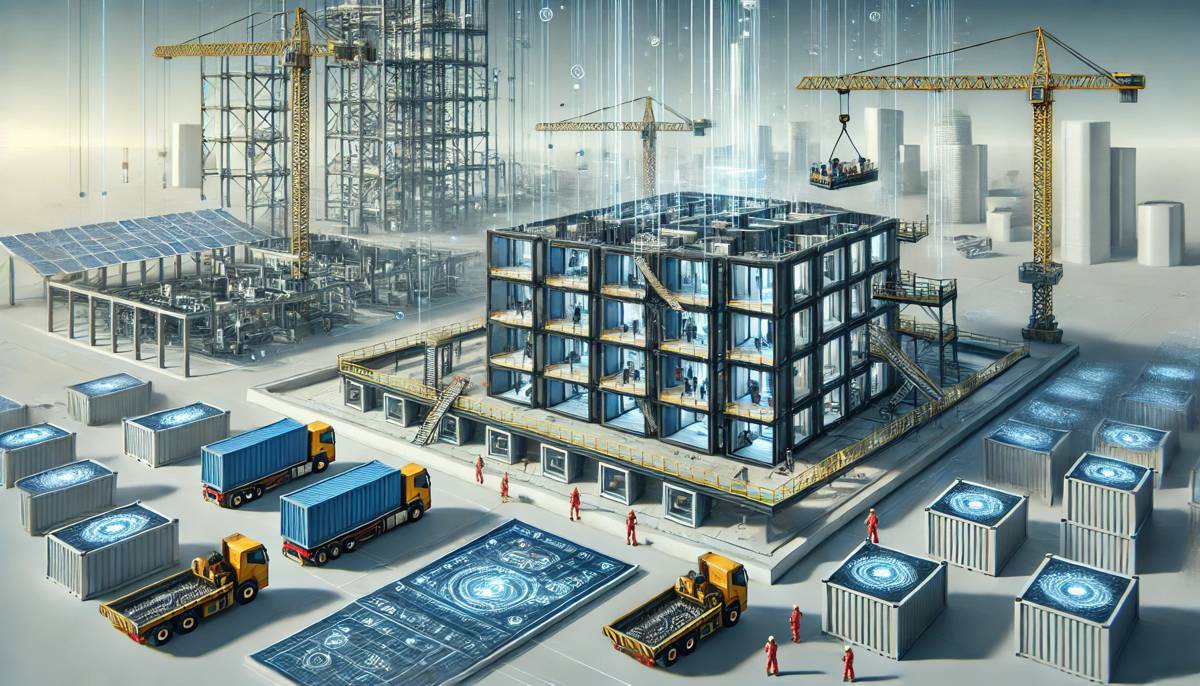
Prefabrication and Modular Construction
Quality and Efficiency: Prefabrication and modular construction techniques are revolutionizing the way buildings are designed and constructed. By manufacturing building components off-site in controlled environments, these methods ensure higher quality control, reduce waste, and shorten construction timelines. Prefabricated elements can range from simple wall panels to complex mechanical systems, all of which are transported to the site for quick assembly. This approach minimizes disruptions and accelerates project completion, making it particularly advantageous for projects in urban areas with limited space and strict timelines.
These innovative construction methods extend beyond commercial applications to residential solutions. Modern Granny Annexe designs utilise prefabricated and modular techniques to create high-quality living spaces that can be efficiently manufactured off-site and quickly assembled in gardens, providing families with flexible accommodation solutions whilst maintaining construction efficiency.
Modular Construction: Modular construction takes prefabrication a step further by assembling entire building sections or modules off-site. These modules are fully outfitted with electrical, plumbing, and finishing elements before being transported to the construction site. Once there, they are quickly assembled into a cohesive structure. This method offers significant benefits in terms of speed, cost, and flexibility. Modular construction is particularly well-suited for repetitive structures such as hotels, hospitals, and apartment buildings, where standardized modules can be efficiently produced and assembled. Additionally, the ability to disassemble and relocate modules provides an adaptable solution for temporary or evolving needs.
Reducing Environmental Impact: Prefabrication and modular construction also contribute to sustainability by reducing waste and minimizing the environmental impact of construction activities. By manufacturing components in controlled environments, these methods reduce the amount of waste generated during construction. Additionally, the ability to recycle and reuse modular components further enhances the sustainability of this approach. This not only benefits the environment but also reduces construction costs and improves overall project efficiency.
Real-World Applications: Prefabrication and modular construction are being used in various projects around the world to enhance quality, efficiency, and sustainability. For example, the construction of the Broad Group’s 57-storey skyscraper in Changsha, China, was completed in just 19 days using prefabricated and modular techniques. Similarly, the development of the new Marriott Hotel in New York City utilized modular construction to reduce construction time and costs. These real-world applications highlight the transformative potential of prefabrication and modular construction in the industry.

3D Printing
Precision and Customization: 3D printing technology is pushing the boundaries of traditional construction methods by enabling the creation of complex structures with precision and minimal waste. This technology uses digital models to produce building components layer by layer, using materials such as concrete, plastics, and even metal. One of the key advantages of 3D printing in construction is its ability to produce custom components quickly and cost-effectively, making it ideal for projects that require unique designs or rapid prototyping. Additionally, the precision of 3D printing reduces material waste and enhances the sustainability of construction processes.
Creating Entire Buildings: One of the most promising applications of 3D printing in construction is the creation of entire buildings. Large-scale 3D printers can construct walls, foundations, and other structural elements directly on-site, significantly reducing construction time and labour costs. This method has already been used to build houses, bridges, and other infrastructure, demonstrating its potential to revolutionize the industry. As the technology continues to develop, it is expected to enable the construction of more complex and larger-scale projects, further enhancing efficiency and innovation in the construction sector.
Sustainability and Waste Reduction: 3D printing also promotes sustainability by reducing waste and optimizing resource use. Traditional construction methods often generate significant amounts of waste due to the need for cutting and fitting materials on-site. In contrast, 3D printing produces components with precision, minimizing material waste. Additionally, 3D printing can use recycled materials, further enhancing its environmental benefits. By adopting 3D printing technology, the construction industry can reduce its environmental impact and promote more sustainable building practices.
Real-World Applications: 3D printing is being used in various construction projects around the world to enhance efficiency and sustainability. For example, the construction of a 3D-printed house in Austin, Texas, was completed in just 24 hours, demonstrating the speed and efficiency of this technology. Similarly, the development of the world’s first 3D-printed bridge in Madrid, Spain, showcases the potential of 3D printing to create complex and innovative structures. These real-world applications highlight the transformative impact of 3D printing on the construction industry.
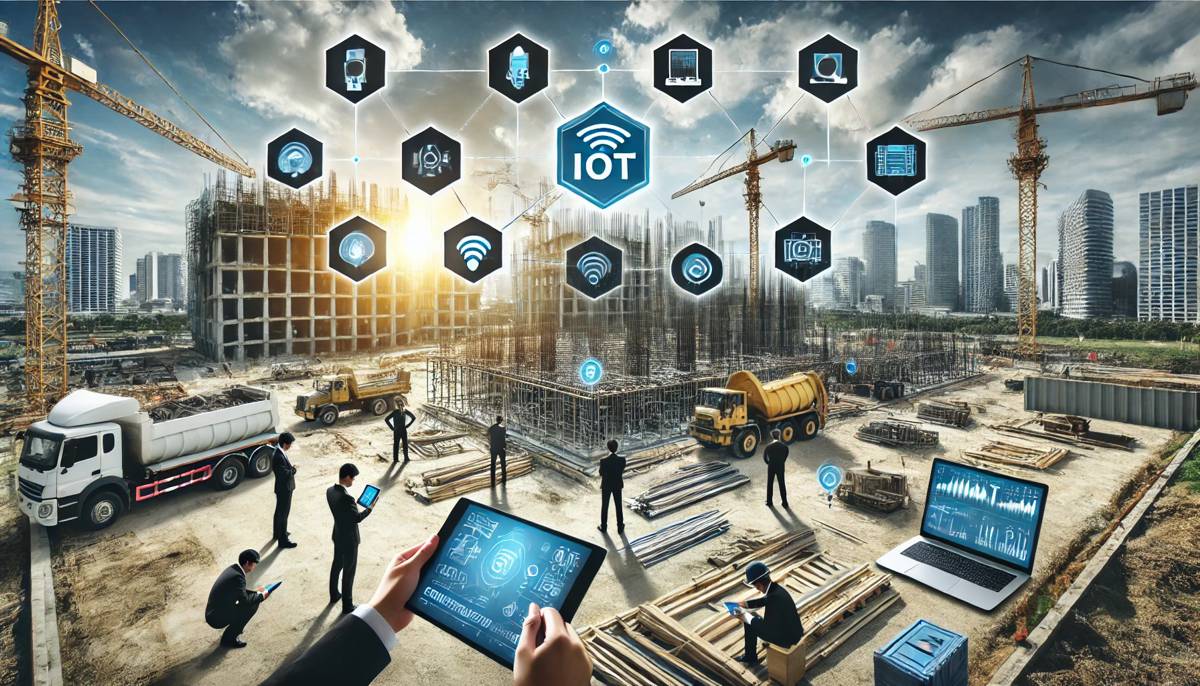
Internet of Things (IoT)
Real-time Monitoring: The Internet of Things (IoT) is revolutionizing construction by connecting equipment, materials, and workers through a network of smart devices and sensors. IoT enables real-time monitoring and control of various aspects of the construction process, improving efficiency, safety, and resource management. For example, IoT sensors can track the location and status of equipment and materials, ensuring that they are used effectively and reducing the risk of theft or loss. Additionally, IoT devices can monitor environmental conditions, such as temperature and humidity, providing valuable data for optimizing construction processes and ensuring the quality of materials.
Digital Twins: One of the most promising applications of IoT in construction is the concept of digital twins. A digital twin is a virtual replica of a physical asset, such as a building or infrastructure, that is continuously updated with data from IoT sensors. This digital representation allows project teams to monitor the performance and condition of the asset in real-time, identifying potential issues and optimizing maintenance activities. Digital twins can also be used for simulation and analysis, enabling predictive maintenance and enhancing decision-making throughout the asset’s lifecycle. By integrating IoT and digital twin technologies, the construction industry can achieve greater efficiency, sustainability, and resilience.
Enhancing Safety and Efficiency: IoT plays a crucial role in enhancing safety and efficiency on construction sites. By providing real-time data and insights, IoT devices enable project managers to monitor site conditions and identify potential hazards. This proactive approach to safety helps prevent accidents and ensures compliance with safety regulations. Additionally, IoT sensors can monitor the health and performance of construction equipment, predicting maintenance needs and reducing downtime. The use of IoT for these tasks not only enhances safety but also improves efficiency and reduces project timelines.
Real-World Applications: IoT is being used in various construction projects around the world to enhance real-time monitoring, safety, and efficiency. For example, the construction of the new smart city in Masdar, Abu Dhabi, has utilized IoT sensors to monitor and optimize the performance of buildings and infrastructure. Similarly, the development of the new Hudson Yards project in New York City has used IoT devices to monitor environmental conditions and optimize construction processes. These real-world applications highlight the transformative potential of IoT in the construction industry.
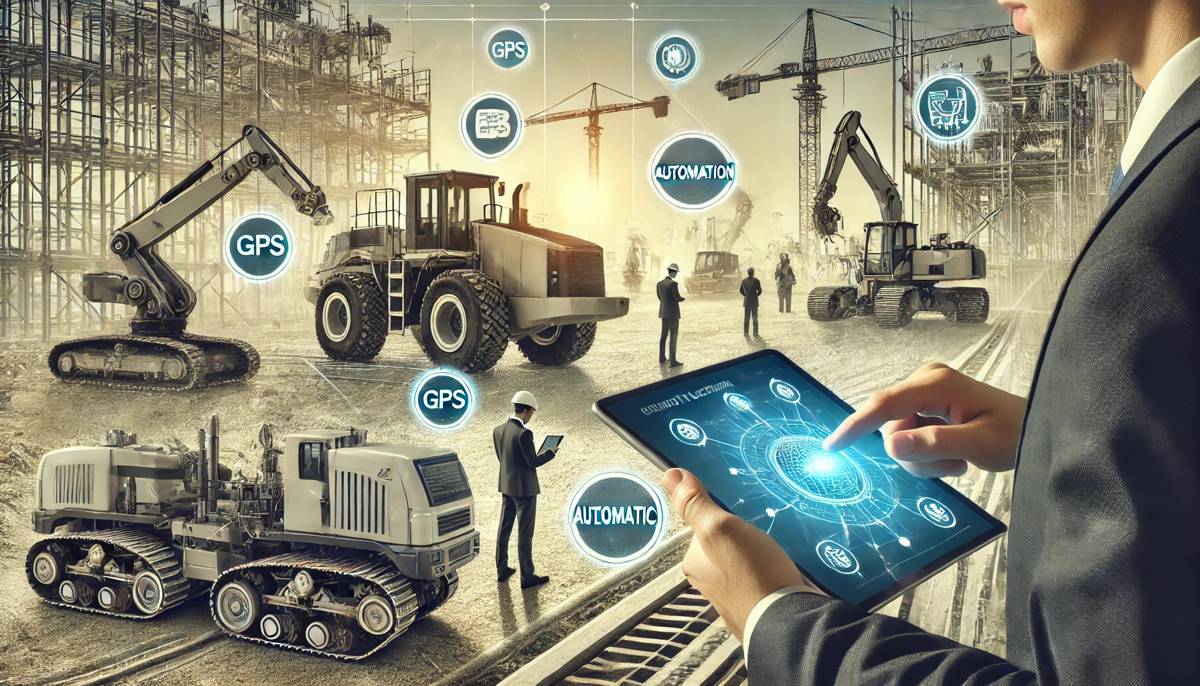
Equipment Machine Control, Automation, and Telematics
Precision and Efficiency: Equipment machine control and automation are revolutionizing construction operations by enhancing precision, efficiency, and safety. Advanced machine control systems use GPS, sensors, and 3D modelling to guide construction equipment, ensuring that tasks such as grading, excavation, and paving are performed with high accuracy. These systems reduce the need for manual intervention and rework, resulting in faster project completion and cost savings. Automation extends to autonomous construction vehicles that can operate with minimal human supervision, further increasing productivity and reducing the risk of accidents.
Telematics: Telematics, the integration of telecommunications and information technology, is transforming equipment management by providing real-time data on equipment performance, location, and utilization. Telematics systems collect and transmit data from construction equipment to centralized platforms, enabling project managers to monitor equipment health, optimize maintenance schedules, and track fuel consumption. This data-driven approach enhances decision-making, reduces downtime, and extends the lifespan of equipment. By leveraging machine control, automation, and telematics, construction companies can achieve higher levels of efficiency, safety, and profitability.
Enhancing Project Management: The use of machine control, automation, and telematics enhances project management by providing tools that optimize workflows and improve decision-making. For example, automated scheduling and project management software can analyze project data to identify potential risks and suggest mitigation strategies. Additionally, these tools can optimize resource allocation, ensuring that projects stay on track and within budget. By providing real-time insights into project performance, machine control, automation, and telematics enable construction managers to make informed decisions and respond quickly to changing conditions.
Real-World Applications: Equipment machine control, automation, and telematics are being used in various construction projects around the world to enhance precision, efficiency, and safety. For example, the construction of the new Panama Canal expansion utilized advanced machine control systems to ensure high accuracy in excavation and grading. Similarly, the development of the new Los Angeles International Airport terminal has used telematics to monitor equipment performance and optimize maintenance schedules. These real-world applications highlight the transformative impact of machine control, automation, and telematics on the construction industry.
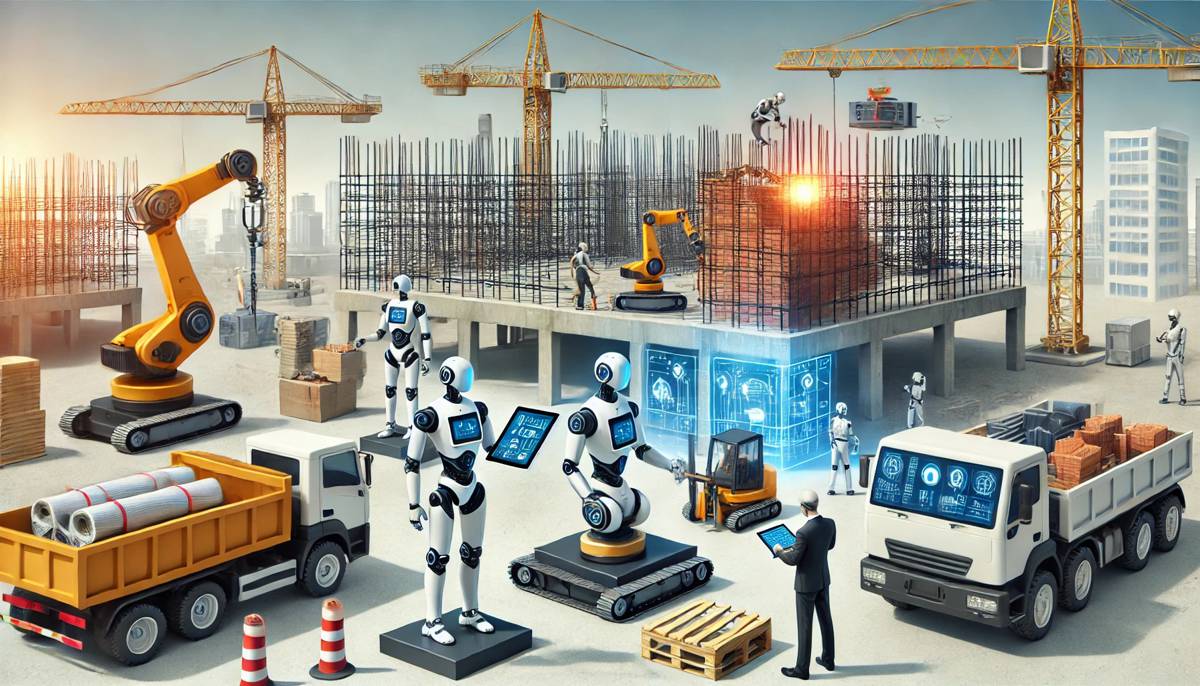
Robotics and Automation
Reducing Labour-intensive Tasks: Robotics and automation are transforming construction sites by taking over repetitive and labour-intensive tasks, leading to increased efficiency and reduced risk of injuries. Construction robots, such as bricklaying robots and autonomous construction vehicles, can perform tasks with high precision and speed, significantly reducing the time and labour required for certain activities. For example, bricklaying robots can lay bricks faster and more accurately than human workers, ensuring consistent quality and reducing the need for rework. Similarly, autonomous construction vehicles can transport materials and perform earthmoving tasks without human intervention, improving safety and efficiency.
Streamlining Processes: Automation extends beyond physical robots to include automated processes and systems that streamline various aspects of construction project management. For instance, automated scheduling and project management software can optimize resource allocation, track progress, and identify potential delays, ensuring that projects stay on track and within budget. Additionally, automation can improve quality control by monitoring construction activities and identifying deviations from design specifications in real-time. By integrating robotics and automation into construction processes, the industry can achieve higher levels of productivity, quality, and safety.
Enhancing Quality Control: The use of robotics and automation enhances quality control by providing tools that ensure consistency and accuracy in construction activities. For example, robots can perform tasks such as welding and painting with high precision, ensuring that the final product meets design specifications. Additionally, automated quality control systems can monitor construction activities in real-time, identifying deviations and providing immediate feedback to workers. This proactive approach to quality control reduces the likelihood of errors and rework, improving overall project outcomes.
Real-World Applications: Robotics and automation are being used in various construction projects around the world to enhance efficiency, safety, and quality control. For example, the construction of the new Amazon headquarters in Arlington, Virginia, has utilized bricklaying robots to speed up construction and ensure consistent quality. Similarly, the development of the new Tokyo 2020 Olympic Stadium has used autonomous construction vehicles to transport materials and perform earthmoving tasks. These real-world applications highlight the transformative potential of robotics and automation in the construction industry.
Meeting Future Challenges to Build a Resilient and Sustainable World
The construction industry is undergoing a profound transformation driven by technological innovation and digital integration. These top 12 trends offer solutions that enhance efficiency, safety, and sustainability. From advanced modelling techniques and sustainable materials to robotics and IoT, each trend brings unique benefits that collectively revolutionize how we build and maintain our infrastructure.
As we continue to explore and adopt these innovations, the construction industry will be better equipped to meet future challenges and build a resilient, sustainable world for generations to come.
